Do any of these scenarios ring true for you?
1.) You haven’t incorporated Linkedin into your marketing strategy, but would like to, because you have heard that it’s a great social media platform for finding super-targeted leads. (At Salesbread we receive on average between 39-55% positive reply rates for our clients.)
2.) Your business has tried Linkedin as a marketing platform, but you aren’t receiving as many qualified sales leads as you would like and have no idea what actually generates results.
Or
3.) It seems like a platform that only works for the most influential business owners, and you feel slightly intimidated – Thinking that those who use Linkedin might not be interested in what you have to say.
If any of the 3 situations resonate with you, this article is a good place to start. In it, we will share Linkedin marketing strategies and tips that actually work. And show you how to implement them, for more high-quality sales leads.
(Salesbread generated close to 7000 qualified sales leads in the past 24 months. If you would like some expert advice, we offer free 15-minute Linkedin lead-generation strategy calls. Feel free to reach out to us for outbound lead generation help.)
What to consider before you decide on your Linkedin marketing strategy
A.) Know your target audience
Yes… Most marketers or salespeople have a broad idea of who they should target.
But the problem with this is that a board target audience (especially with prospecting) runs the risk of marketing failure.
Why?
Because if you’re targeting all mental health professionals in America you will have a huuuuge list of prospects but how many of these leads will be ultra-targeted?
It’s better to have a smaller list of your ideal buyers who will actually buy from you, than a broad list of prospects who might be a bad fit.
Here’s what to do:
Ask yourself: “WHO is buying from me?” and “What do all your buyers have in common?”
For example, if you are targeting mental health professionals in the US think about:
- What do my current buying customers specialize in? Child psychology? Cognitive behavioral therapy? ADHD and trauma counseling?
- Do they have their own practice or are they based in hospitals?
- Do they have a team of mental health professionals working with them?
- How many employees do they have?
- Or if based in a hospital, how many beds are there?
- Where are your buyers located? Florida? New York? 20 miles from Alaska?
If you go after an audience that’s based on current buying data, it will be so much easier to either build a look-alike prospecting list for Linkedin outreach or connect with the right kinds of buyers.
This video shares how we build prospecting lists for our clients: (Notice how we obsess about list building and make sure that our lists are super refined before we implement any outreach strategy.)
,Once you know exactly who to target – based on buyer intent data, the chances of running a successful Linkedin marketing campaign will be so much higher.
This article: How to Build a Sales Prospecting List in Any Industry will show exactly how to build a super-refined targeting list. (Especially if you’re interested in Linkedin outreach.)
B.) Optimize your Linkedin Profile
What to write and share on your Linkedin profile
You might be tempted to write a sales page. But don’t do this. One thing that we have noticed is that when profiles look too salesy it backfires.
So be really clear about who you help and how you help.
If you can, lead with the problem that you’re out there solving and for whom, as opposed to your solution. Talk a lot about your prospect’s pain points. You can then end with how you’re approaching this problem that they might be facing.
This will pique your audience’s curiosity and show what you’re all about without being too salesy.
Below is an example:
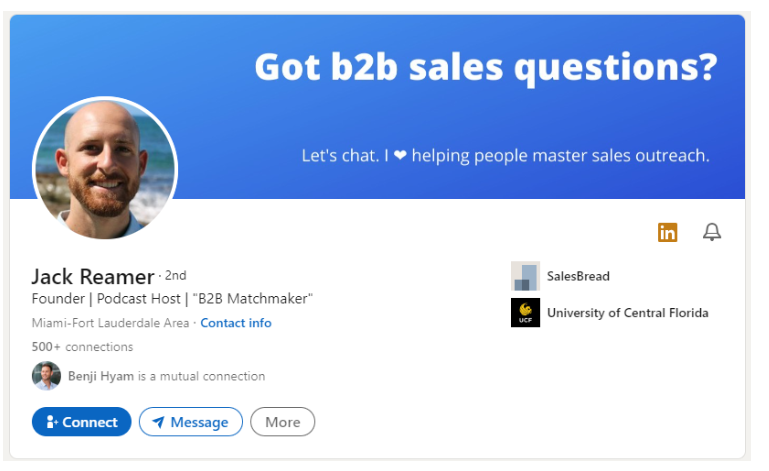
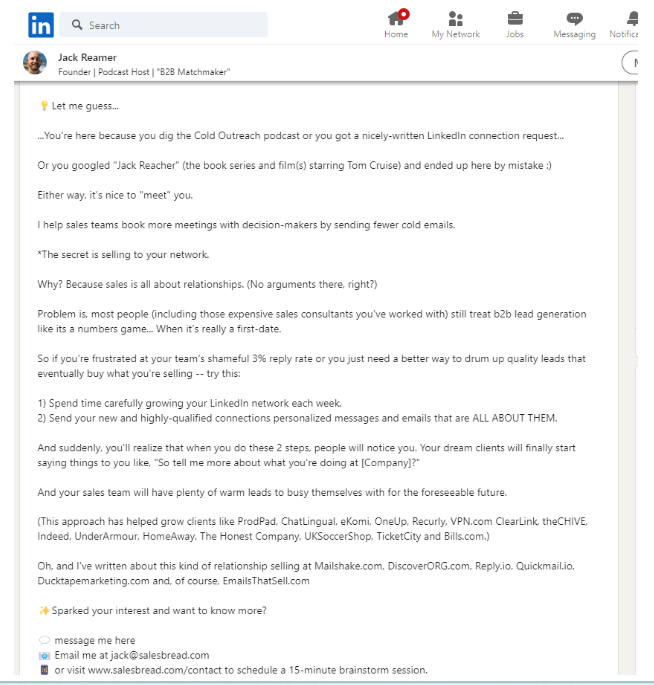
Also, focus on optimizing the Linkedin banners and adding contact information in.
The more professional and informative your LinkedIn account looks, the better.
Why?
Because it tells prospects exactly what they need to know about you and how to reach you.
Focus on trust and thought leadership
Becoming a thought leader in your industry will definitely help you grow your audience. You can initially start off with sharing some of the top articles from your website, or case studies.
Below is a featured section from Grow & Convert, that shows an example of how you can utilize articles and case studies.
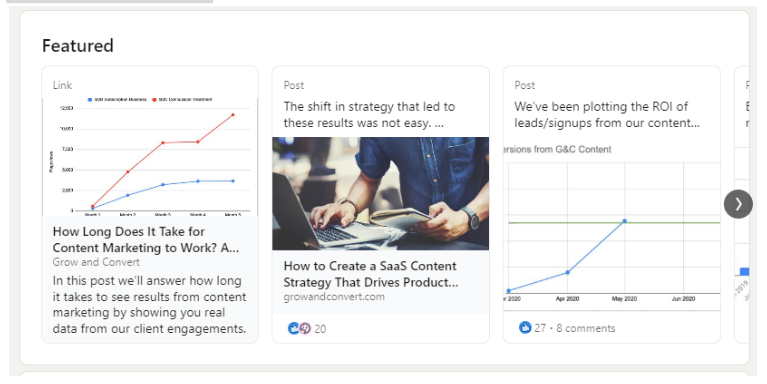
When you add “proof” of how your service actually helps people, this creates trust in your brand.
Another option which works really well is quick video tutorials that show that you know exactly what you’re talking about.
The more valuable your information is to your audience, the more likely they will engage with you.
Make sure you have a professional profile photo
According to Linkedin, images result in a 2x higher comment rate.
Other studies have shown that it only “takes one-tenth of a second for someone to draw conclusions about you based on your photo.”
So images are a powerful marketing tool on Linkedin.
When it comes to your personal profile make sure that your photo looks professional. Don’t use random selfies.
If you think about it, your LinkedIn profile is the first point of interaction that a client might have with you.
Below is a series of images that Matthew Hunt shared on Linkedin as a small experiment.
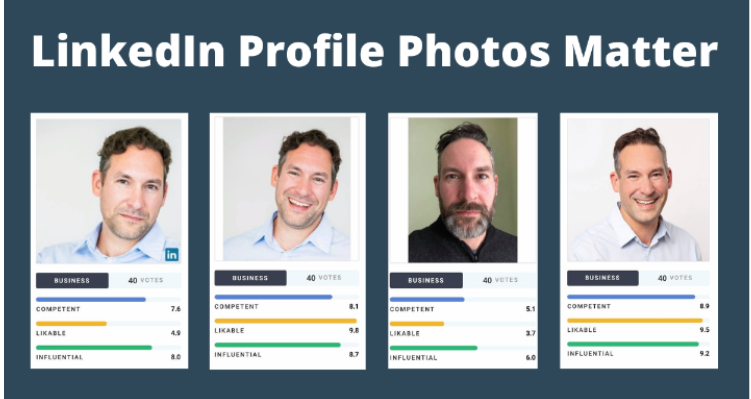
He asked people on Linkedin what they thought of each photo according to different polls.
The poll ranged from competent, likeable to influential. As you can see each photo had a different result.
The last photo received the best reception from the audience as you can see.
C.) Build a profitable network of connections
Don’t connect with just anyone on Linkedin. The reason for this is you could end up having hundreds of connections that aren’t relevant to your business.
For example, if you’re selling saas products to real estate agents, you might want to connect with those in real estate, and other saas experts.
In this way, you build a profitable network of connections.
D.) Choose which form of marketing would attract your audience the best
Next, think about whether your ideal target audience is actually on Linkedin.
For example, if you’re a wedding photographer, Instagram might be a better social media platform for your business. But if you’re looking for b2b leads, Linkedin might be the better choice.
Think about where your audience spends most of their time and then market on that specific social network.
Linkedin outreach strategy

Salesbread uses Linkedin as a b2b lead generation outreach platform.
How do we do this?
Firstly we build ultra-refined prospect lists for our clients based on actual buyer intent data, and then our personalization expert will research each prospect on that list.
The reason?
To send ultra-personalized connection requests and follow-up messages.
This approach is focused on quality and not quantity outreach. We would rather reach out to 100 of your ideal customers who agree to a booked sales meeting than reach out to thousands of prospects who are a bad fit.
Next, once our prospects have connected we will follow up with non-salesy messages. Our call to action is simple… We just ask for a quick call. More often than not, prospects agree to this.
(This article 7 Steps On How to Prospect On Linkedin goes into detail on how our prospecting strategy works.)
Our metrics are as follows:
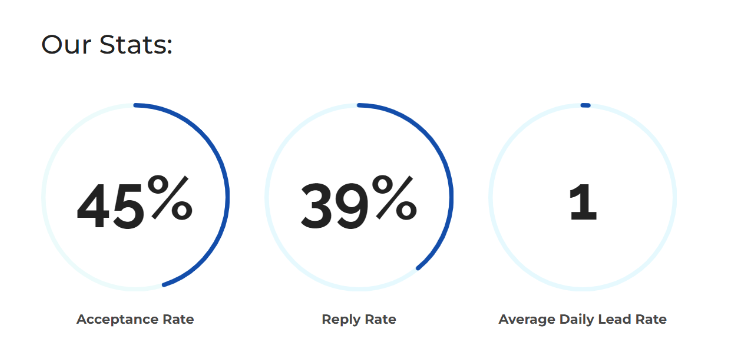
By using this approach we have managed to generate close to 7000 qualified sales leads for our clients.
Here are some of the replies we have received by using this approach:
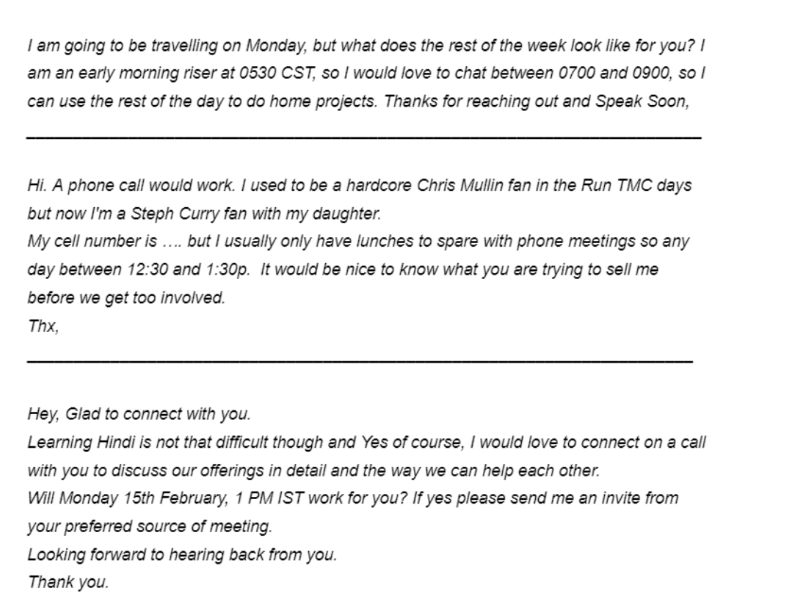
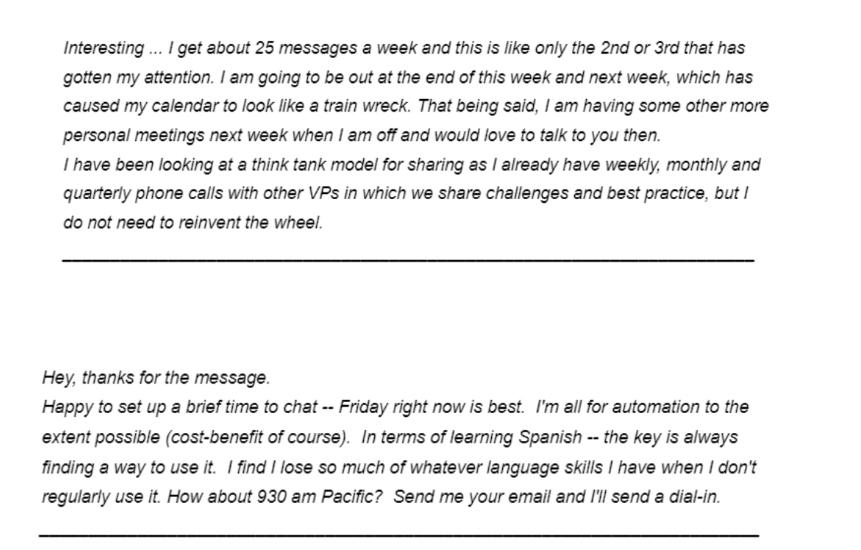
If you want the same replies from your ideal clients, reach out to us for a free 15-minute strategy call. We can help you generate 1 qualified sales lead per day if you lack the time, or experience in this form of Linkedin marketing.
Linkedin Mobile connector campaigns

At Salesbread we have seen great results with sending mobile connection campaigns. In fact, for some clients, their connections have doubled.
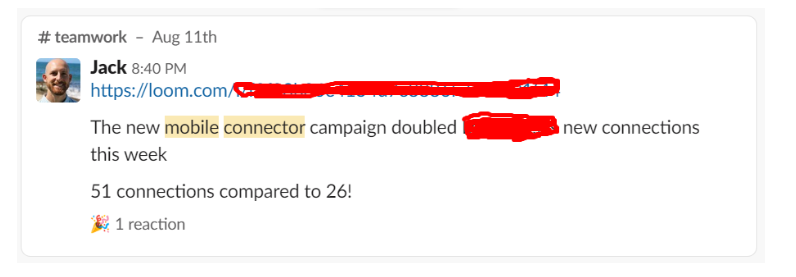
This is a new strategy that we are trying out.
Basically, mobile connections allow you to send more connection requests each week.
At the moment you may be familiar with Linkedin’s limit of 100 connection requests per week.
Why the number 100 has circulated, we’re not sure, because this isn’t exactly reality.
We have some campaigns that are able to safely send 140 connection requests without any account restrictions each week.
We have been testing this out for over 6 months, and haven’t had any issues.
And just like cold email deliverability, this type of outreach has a lot to do with engagement. So if a lot of people accept your connection you can actually send a whole lot more than 100.
So bearing this in mind, there is a limit. We do not recommend going a lot further past 150 connections, even for the best campaigns, with the highest acceptance rates.
We are finding that if you are also using mobile connection requests from your Linkedin app, you’re able to send an additional 50 – 100 requests each week.
So when it comes to Linkedin strategy and you want to double the number of invites that your competitors are limited to, keep your engagements high and gradually work your way up to maybe 120 invites per week. (If you’re really good to 140.)
Then you can add in 10-20 mobile connection requests each day.
This will allow you to truly approach 200 invites per week, like the good old days.
The only catch is when you send a mobile request you can’t write any message.
But frankly, it’s such a bonus that you don’t have to worry about not sending a message.
So if you’re considering any Linkedin strategy, don’t forget that mobile requests are now a thing. They can even be automated if you use the right tools.
Bear in mind that all of this does NOT work if you have a crappy strategy. If you don’t target people that really care about what you’re offering if you don’t follow up and use personalization. If you have to do your part. Send the right thing to the right people and you will be rewarded with almost doubling the amount of connection requests you send.
Linkedin influencer marketing
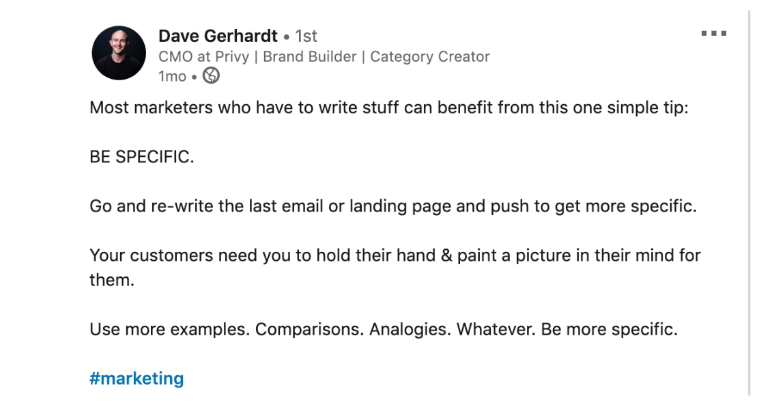
Why would using influencers on Linkedin for marketing work?
Well for example, if your company uses an influencer who has a lot of weight behind their name, your audience will want to engage with these Linkedin posts.
When someone who has authority in a specific niche shares their insights, people are going to be interested in what they have to say.
When an influencer shares high-value expert information, thousands of people will start following this person because they know they will get excellent insights into a specific topic.
The right influencer can create tons of brand awareness for your company; especially if they have a massive following. AND they can also create trust in your brand.
Here’s how to find Linkedin influencers
Linkedin has its own list of hand-picked influencers. The problem is though, that the people on this list are super influential and most probably won’t be interested in working with smaller brands or companies.
This list includes people like Melinda Gates, Sara Blakely and Arne Sorenson.
So what we suggest is rather using your Linkedin search to find the right influencers for your business.
Instead of doing a profile search, do a content search on Linkedin.
For example, if you are looking for influencers in the b2b marketing space, who regularly share info on content marketing… Simply go to the Linkedin search bar and search for “content marketing.”
You can use various filters to refine this list. For example, search for influencers who “post” often.
The results will show all posts related to content marketing.
Then search for posts that have high level engagement. These people will probably also have a large audience, and may be the right kind of influencer that you would want to work with.
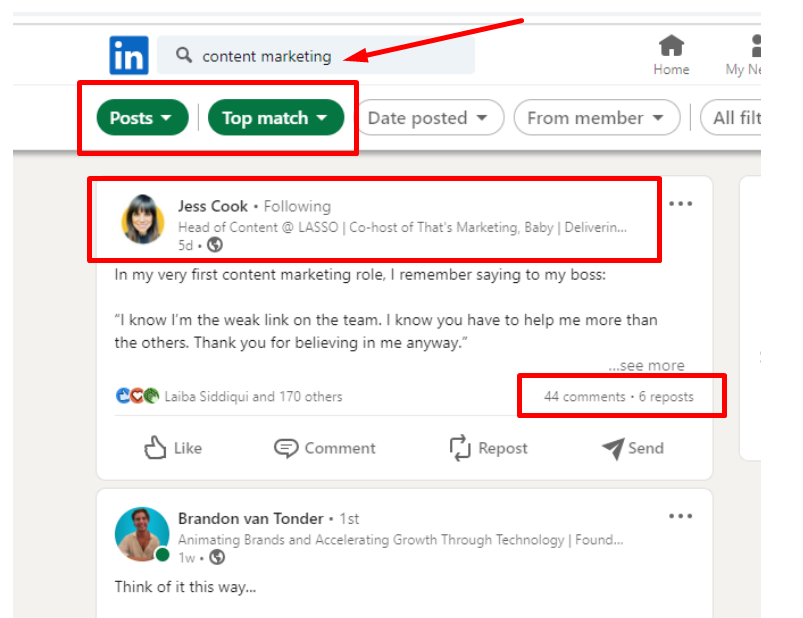
Once you have figured out which influencer would be the best fit for your business, you can then reach out to them and ask if they would be interested in working with you.
You can either reach out to them via a personalized connection request, or an Inmail.
Or if they have their contact information listed on their Linkedin homepage, you can just use that info to reach out to them.

This article: “Why LinkedIn influencer marketing matters for brands” by Sprout Social is incredibly informative if this is a strategy you would like to try.
Linkedin Ads
Linkedin Ads are paid adverts that you can use to capture your audience’s attention. You can use various filters to get super granular on who the ads should be shown to.
Pro Tip: Have a look at your competitor’s ads and see what you can do to outshine them.

Some of the top-performing ads have this in common

(This article shares some tips for Linkedin ad strategies.)
Back to ad filters…
As you can see below there are a ton of filters you can use to target the right people through your Linkedin ads.

Linkedin offers various types of ads, such as:
- Carousel ads
- Text ads
- InMail Ads
- Sponsored Ads
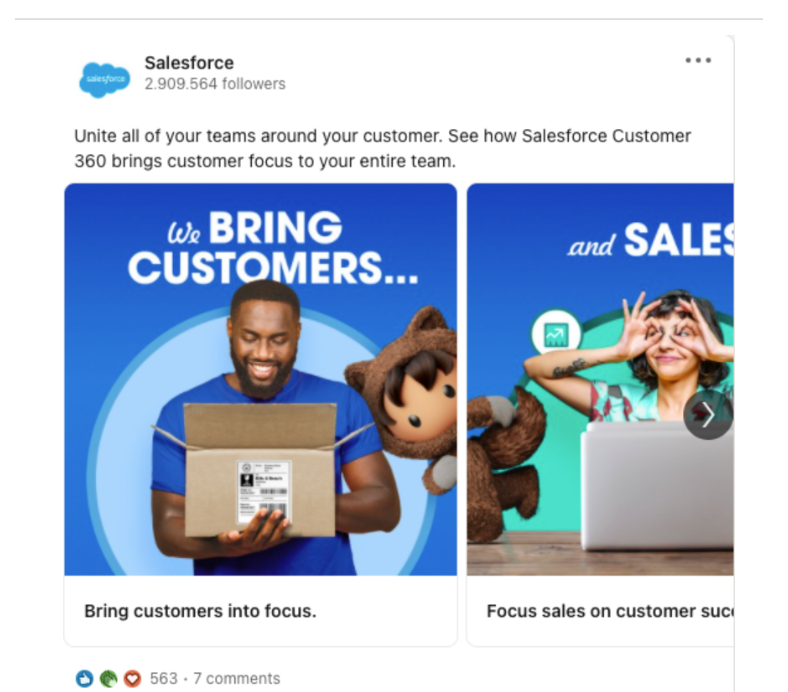
You could always try out the different ad formats and see which gets the best results for your campaign.
Linkedin ads can be costly though. You can expect to pay between $3-$8 per click on Linkedin.
The average, though, for Linkedin advertising seems to be about $5.39 per click in 2023.
NOTE:
We have had clients tell us that they spent thousands of dollars on Linkedin ads and never even received one lead. You could always try ads out for a month or 2 and if it doesn’t work for your business, try a different strategy listed here.
Linkedin Content marketing strategy

The above user makes use of engaging and often humorous content marketing on Linkedin.
Much of his content captures the attention of users.
He uses trending stories, relevant content and interesting visuals (through video).


Their company mainly focuses on content marketing for Saas businesses, so they often try to stand out with unique and almost “shockingly” funny videos.
But once again this all depends on your target audience. Think about which type of content would resonate the most with your audience.
For example, a company called Grow & Convert is a content marketing and SEO agency, and for their content strategy, they share helpful videos and articles for their audience.

Here are some rules to follow if you’re interested in using content marketing on Linkedin:
- Consider your target audience – What is it that they would want to see? What would be helpful to your audience?
- Engage with your audience – Once they start commenting on your post, reply to their messages.
- Don’t be salesy but rather try to help your audience with valuable-quality content
- Use relevant hashtags
- Post consistently – If LinkedIn users see you often, you will constantly be on their minds. So if they need to address a pain point that you solve, the chances of them reaching out to you will be so much higher because they are already familiar with your personal brand.
- Do some A/B testing and adjust your strategy
- Remember that the Linkedin algorithm will also promote your content if it’s relevant to your audience and engaging.

Source of image: Buffer
Build relationships
Linkedin is all about building business relationships. If you spend the time reaching out and connecting with the right audience, the chances of them wanting to use your services will be so much greater.
Forget the sleazy sales pitches.
Rather focus on how you can add value to people in your professional network.
You can also comment on their posts and share their content to your own feed. When you engage with people positively, and let them know you enjoy their content, they will want to engage with you too.
Have a business page
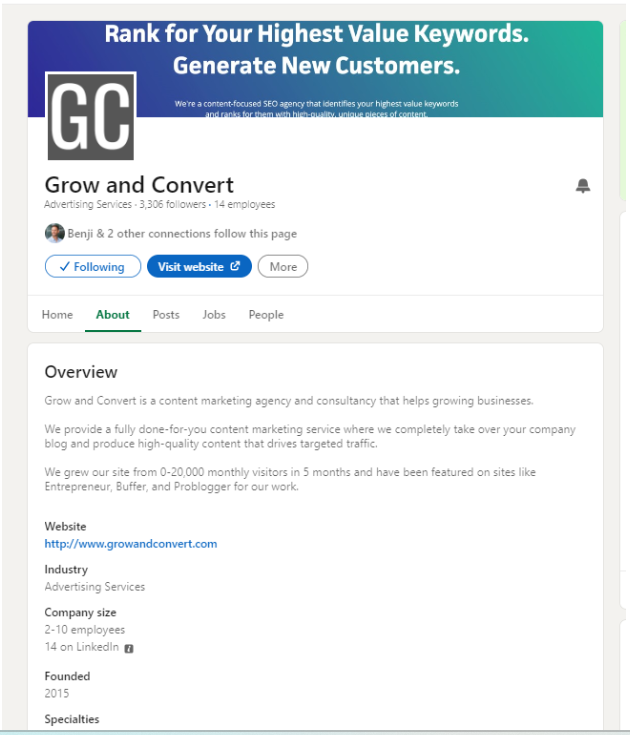
People enjoy connecting with humans.
This is why having your own personal LinkedIn page is so much better than just having a business page.
But a business page can be beneficial for directing those who engage with you too.
Focus first on optimizing your own personal profile and then creating a business page. You could include what your business does, your employees etc.
Promote your Linkedin profile page
Once you have a Linkedin company page, you can promote it through:
- Linkedin ads
- Your personal Linkedin profile
- Or even ask your employees to get involved and share it on their feeds.
- You could also tag your company page through your content marketing efforts like Grow and Convert have done below.
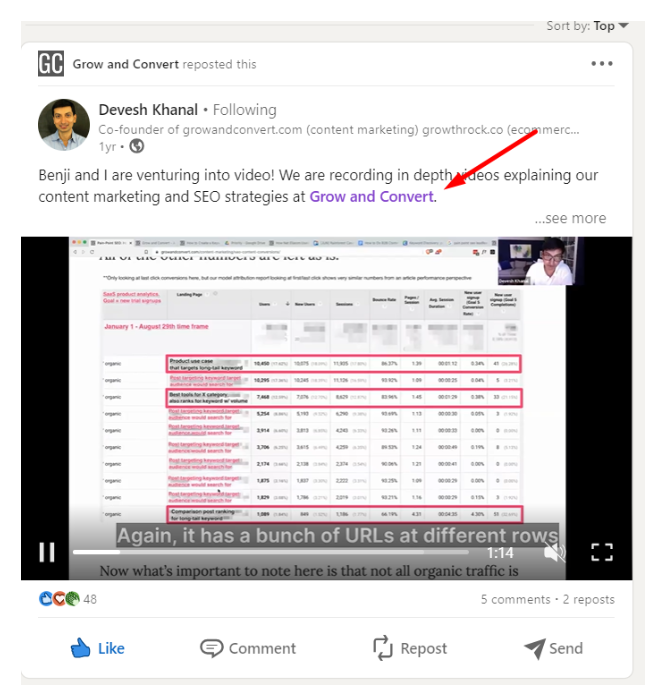
Use a content calendar

Content calendars make your social media marketing efforts more streamlined and efficient.
In this way, you can track what’s been posted, and what still needs to be posted and better plan your digital marketing efforts.
You can use these calendars to even repurpose blog posts and post smaller pieces of content across various social media platforms.
This allows for an effective Linkedin marketing strategy. There are various content calendars available. Whether free or paid. (You can get a free template here.)

Track engagement and conversions to see what’s working and what’s not
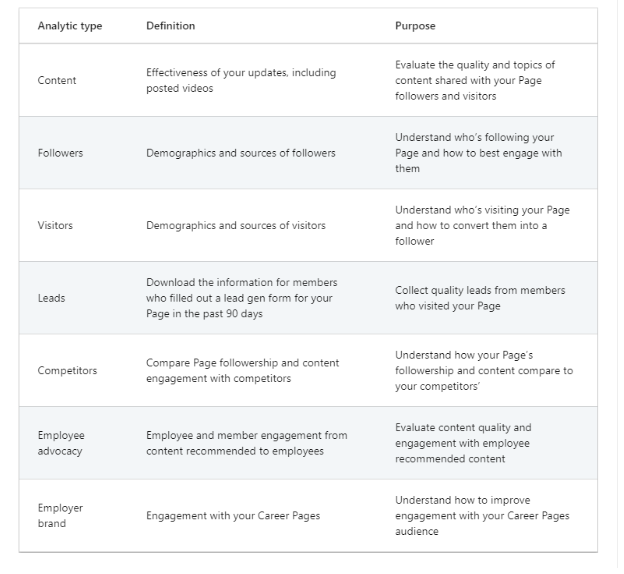
Linkedin analytics can be really helpful to keep an eye on what’s working and what’s not.
It can give you insights into how your page is performing.
This in turn will help you adjust your marketing goals and strategies for better engagement rates and conversions.
Try each strategy out and see which works best…
Sometimes a bit of A/B testing on each type of strategy can help you gain insights into what’s working and what’s not. You could either try all of the marketing tips above, or just two or three.
But if your business needs more leads as in yesterday, Linkedin outreach might be the way to go.
At Salesbread our clients receive their first qualified sales lead within 48 hours after launching their campaigns.
If this is something that interests you, hop on a free 15-minute consultation call with us and let’s see how we can help you book more QUALIFIED sales calls.
